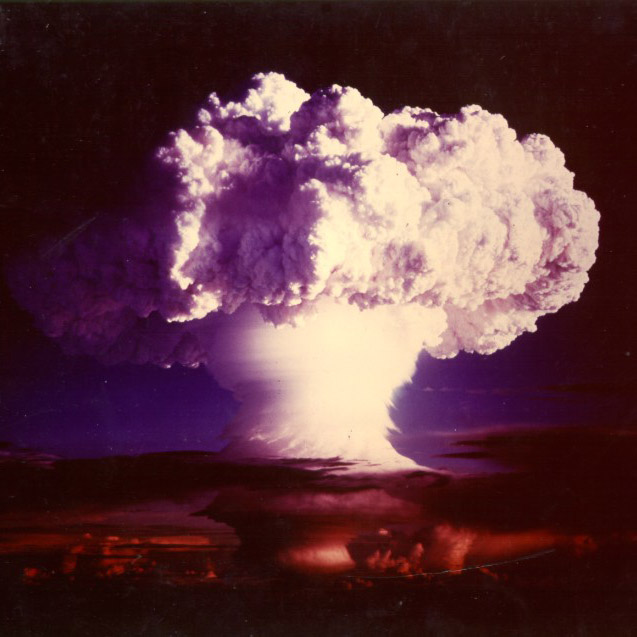Ајнштајнијум
99
Es
Група
н/д
Периода
7
Блок
f
Протони
Електрони
Неутрони
99
99
153
Општа својства
Атомски број
99
Атомска маса
[252]
Масени број
252
Категорија
Актиноиди
Боја
н/д
Радиоактиван
Да
Named after Albert Einstein
Кристална структура
н/д
Историја
Einsteinium was discovered as a component of the debris of the first hydrogen bomb explosion in 1952.
It was identified by Albert Ghiorso and co-workers at the University of California, Berkeley in collaboration with the Argonne and Los Alamos National Laboratories, in the fallout from the Ivy Mike nuclear test.
The new element was produced by the nuclear explosion in miniscule amounts by the addition of 15 neutrons to uranium-238.
It was identified by Albert Ghiorso and co-workers at the University of California, Berkeley in collaboration with the Argonne and Los Alamos National Laboratories, in the fallout from the Ivy Mike nuclear test.
The new element was produced by the nuclear explosion in miniscule amounts by the addition of 15 neutrons to uranium-238.
Електрони по љусци
2, 8, 18, 32, 29, 8, 2
Електронска конфигурација
[Rn] 5f11 7s2
Einsteinium is the first divalent metal in the actinide series
Физичка својства
Стање
Чвсрто
Густина
8,84 g/cm3
Температура топљења
1133,15 K | 860 °C | 1580 °F
Температура кључања
-
Топлота топљења
н/д kJ/mol
Топлота испаравања
н/д kJ/mol
Специфична топлота
- J/g·K
Заступљеност у Земљиној кори
н/д
Заступљеност у Космосу
н/д

Захвалности за слике: Wikimedia Commons (National Nuclear Security Administration)
Einsteinium was first observed in the fallout from the Ivy Mike nuclear test
CAS број
7429-92-7
ПубЦхем ЦИД број
н/д
Атомска својства
Атомски радијус
-
Ковалентни радијус
-
Електронегативност
1,3 (Полингова скала)
Јонизујући потенцијал
6,42 eV
Молска запремина
28,5 cm3/mol
Топлотна проводљивост
0,1 W/cm·K
Оксидациона стања
2, 3
Примена
Einsteinium is mainly used for scientific research purposes.
The rare isotope einsteinium-254 is favored for production of ultraheavy elements.
Einsteinium-254 was used as the calibration marker in the chemical analysis spectrometer of the Surveyor 5 lunar probe.
The rare isotope einsteinium-254 is favored for production of ultraheavy elements.
Einsteinium-254 was used as the calibration marker in the chemical analysis spectrometer of the Surveyor 5 lunar probe.
Einsteinium is harmful due to its radioactivity
Изотопи
Стабилни изотопи
-Нестабилни изотопи
240Es, 241Es, 242Es, 243Es, 244Es, 245Es, 246Es, 247Es, 248Es, 249Es, 250Es, 251Es, 252Es, 253Es, 254Es, 255Es, 256Es, 257Es, 258Es